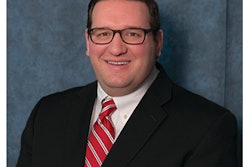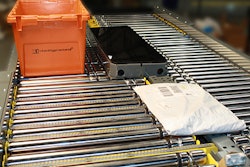March 15--They both sell suits to the American middle class, but in consumers' minds, Jos. A. Bank Clothiers and the Men's Wearhouse occupy distinctive niches.
Bank's image is classic, Men's Wearhouse is trendier. Though both are known for a promotional sales approach, Bank has billed itself as the more upscale of the two.
It's those brand distinctions that the two biggest menswear chains should strive to maintain as they join forces in a $1.8 billion deal fraught with potential pitfalls, retail experts said.
Bank, headquartered in Hampstead, accepted a takeover bid from its larger, Houston-based rival Tuesday, ending months of public hostilities between the two companies. Men's Wearhouse will pay Bank stockholders $65 a share in cash.
Men's Wearhouse said it plans to make the business marriage work by cutting costs in merchandise sourcing, distribution, advertising and back-office corporate functions. It hopes to boost sales and profits by attracting shoppers to each brand, keeping the Jos. A. Bank banner and promising "no rebranding or remodels."
"That proposal of keeping two brands separate does make sense from a consumer perspective," said Tammy M. Tan, an associate partner at Vivaldi Partners, a New York-based brand strategy consulting firm. "There is an established identity. It's a way to retain the consumer base and association with these particular brands."
Retaining brand identity may be less important in a merger of airlines or banks, but in retail, a blurring of brands could cause consumer confusion or defections, Tan said.
"Clothing is an expression of self-identity," she said. "The clothing you buy is personal because it's an expression of self. A person might affiliate himself with Jack Spade versus Brooks Brothers."
Men's Wearhouse, which also operates Moores and K&G stores, would continue to target different segments through different brands in the way Gap Inc. operates Banana Republic, Gap and Old Navy, Tan said.
"Each has a distinct proposition in the marketplace," she said. "You would never mix up Old Navy with the look and feel of Banana Republic, and they did not transform Banana Republic into a Gap. Each brand has a specific role."
Men's Wearhouse "needs to continue marketing and promoting the brands and bringing in the customer base," she said. "A lot of common owners maintain different brands and target different customers."
The new, larger company has its work cut out for it, said Howard Davidowitz, chairman of Davidowitz & Associates, a New York-based retail consulting and investment banking firm.
"What they both do is market men's clothing to middle-class Americans, and that is the biggest weakness," Davidowitz said. "The middle class is crushed."
The smaller, older, East Coast-based Bank, which runs 629 stores, is seen as the more traditional clothier, the kind of shop customers stick with as they progress in their lives and careers. It traces its roots to 1905, when a Baltimore tailor started a clothing manufacturing business that was taken over by his grandson, Joseph A. Bank. Bank sold suits to other retailers before selling out of its factory and opening its own outlets in the 1960s. The chain has tried to distinguish itself through its luxury collections and by promising a focus on customer service and in-store tailors.
Men's Wearhouse was founded in 1973 by George Zimmer, the pitchman and former chairman who was ousted by its board last June. The chain was designed to put at ease men who disliked the suit buying process and tends to attract a younger, more trend-conscious consumer. Its high-margin tuxedo rentals make up nearly a quarter of the company's sales. It runs 1,124 stores, with executive offices in Fremont, Calif.
Ray Conaway, a 19-year-old Baltimore resident and student at Baltimore City Community College, has been shopping at both Jos. A. Bank and Men's Wearhouse since high school. He sees each chain as having better selections of certain merchandise doing a better job of fulfilling different needs.
"If I'm looking for a rental or tuxedo, I go to Men's Wearhouse, but if I'm looking to buy a suit or a shirt and tie, I prefer going to Jos. A. Bank," Conaway said. "It's just something I've stuck with doing for so long."
Some of his friends, though, he noted, have more of an affinity for Men's Wearhouse.
Both chains have used a highly promotional pricing strategy to compete with each other and other suit sellers. That likely will continue to some extent, experts said.
The strategy, successful during the recession, has brought Bank diminishing returns and drew fewer customers through the doors in recent years. By the end of last year, sales had begun to improve as the chain shifted to a less promotional strategy. The merger will create a $3.5 billion powerhouse with 1,700 stores across the U.S. and about 23,000 employees that analysts said could compete better with department stores and online retailers.
"They've captured a bigger part of the market, it's as simple as that," said Mark Millman, CEO and founder of Millman Search Group of Owings Mills, a retail and shopping center consultant.
Millman also expects the brands to remain separate stores, though rebranding particular locations is a possibility.
"It will give them more purchasing power and better negotiating power with landlords," Millman said. "It makes them a major player on the real estate side."
As Men's Wearhouse looks to eliminate duplicate operating functions, analysts believe cost-cutting could come across a broad spectrum. It's not at all clear yet what effect the merger will have on Bank's Carroll County operations, where 780 people work at corporate offices and distribution centers in Hampstead and a warehouse in Eldersburg.
While Men's Wearhouse plans to retain both brands, it's not likely to retain each distribution network or all the stores, especially where there's overlap or where a store may be underperforming, analysts said.
"The product is so similar that it's hard for me to believe that they will not close stores that are in the same malls if there is duplication," said Jerry Reisman, a mergers and acquisitions expert and a partner at Garden City, N.Y.-based Reisman, Peirez, Reisman & Capobianco. "They might pick up those sales in a Men's Wearhouse store, or they may close a Men's Wearhouse store and leave a Jos. A. Bank store. They will look at the numbers -- performance, profit, the cost of each store, and some leases may be better than others. All those factors will be considered."
Given the higher price that Bank squeezed out of Men's Wearhouse, the importance of cost-cutting and a smooth merger increases.
"The ability to meld these two companies together so they can sell more suits isn't necessarily a given for them. They need the transition to go smoothly," said Rich Duprey, a contributor to The Motley Fool, a financial services company and website. "It was such an acrimonious acquisition, and getting two corporate cultures to go together smoothly [won't] necessarily ... happen."
And they'll be trying to do it at a time when the economy isn't all that good and amid rising competition, particularly online, Duprey said.
Emerging online portals such as Mr. Porter boast discounts of up to 60 percent on top designer labels, Tan said.
But Bank and Men's Wearhouse might have a leg up on their online-only rivals.
"With something like a suit, you need to make sure it fits properly and looks good, and it might require alterations," Tan said. "They can play up that angle."
Copyright 2014 - The Baltimore Sun














![Pros To Know 2026 [color]](https://img.sdcexec.com/mindful/acbm/workspaces/default/uploads/2025/08/prostoknow-2026-color.mduFvhpgMk.png?ar=16%3A9&auto=format%2Ccompress&bg=fff&fill-color=fff&fit=fill&h=135&q=70&w=240)




